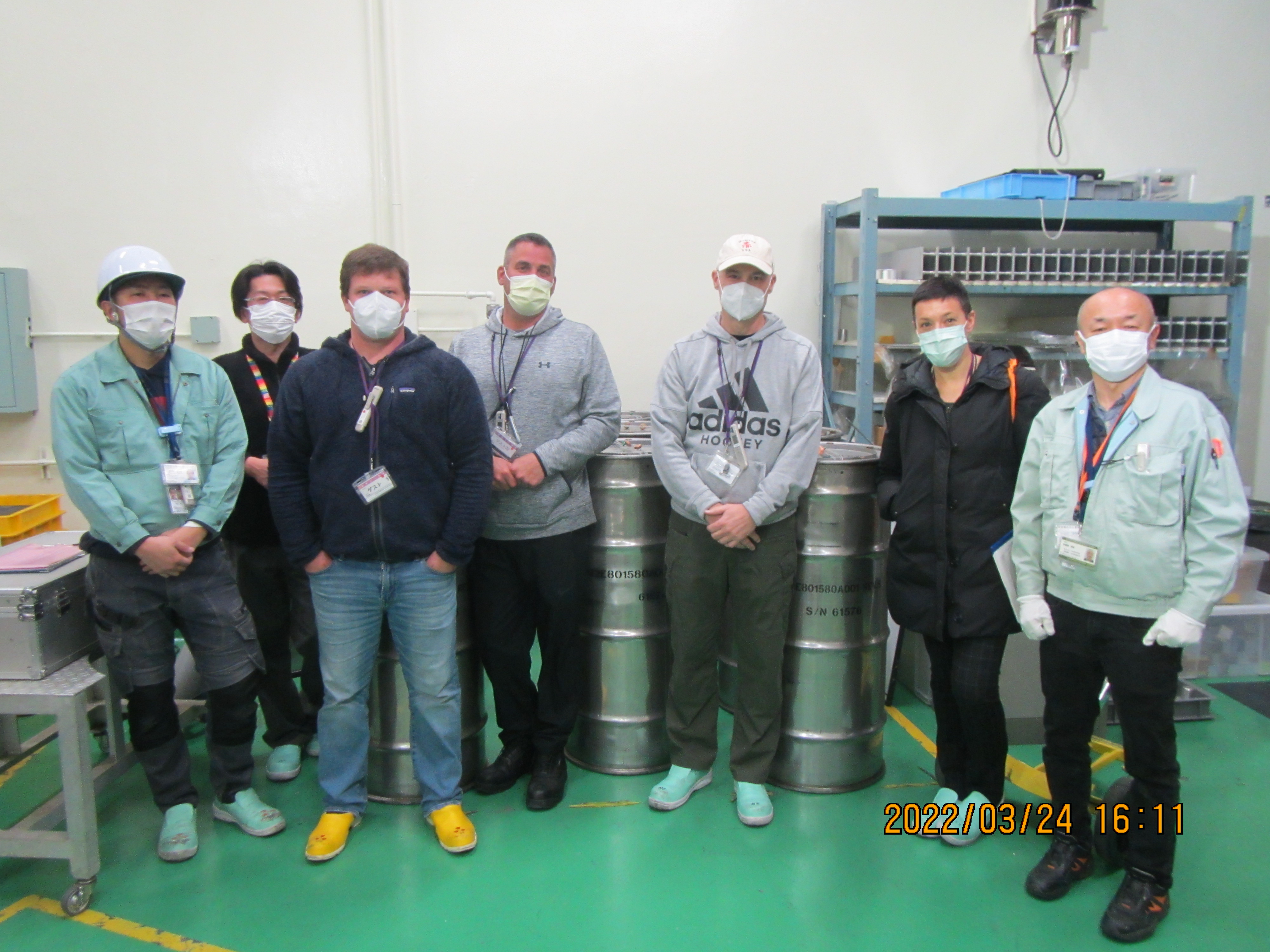Y-12 Blog
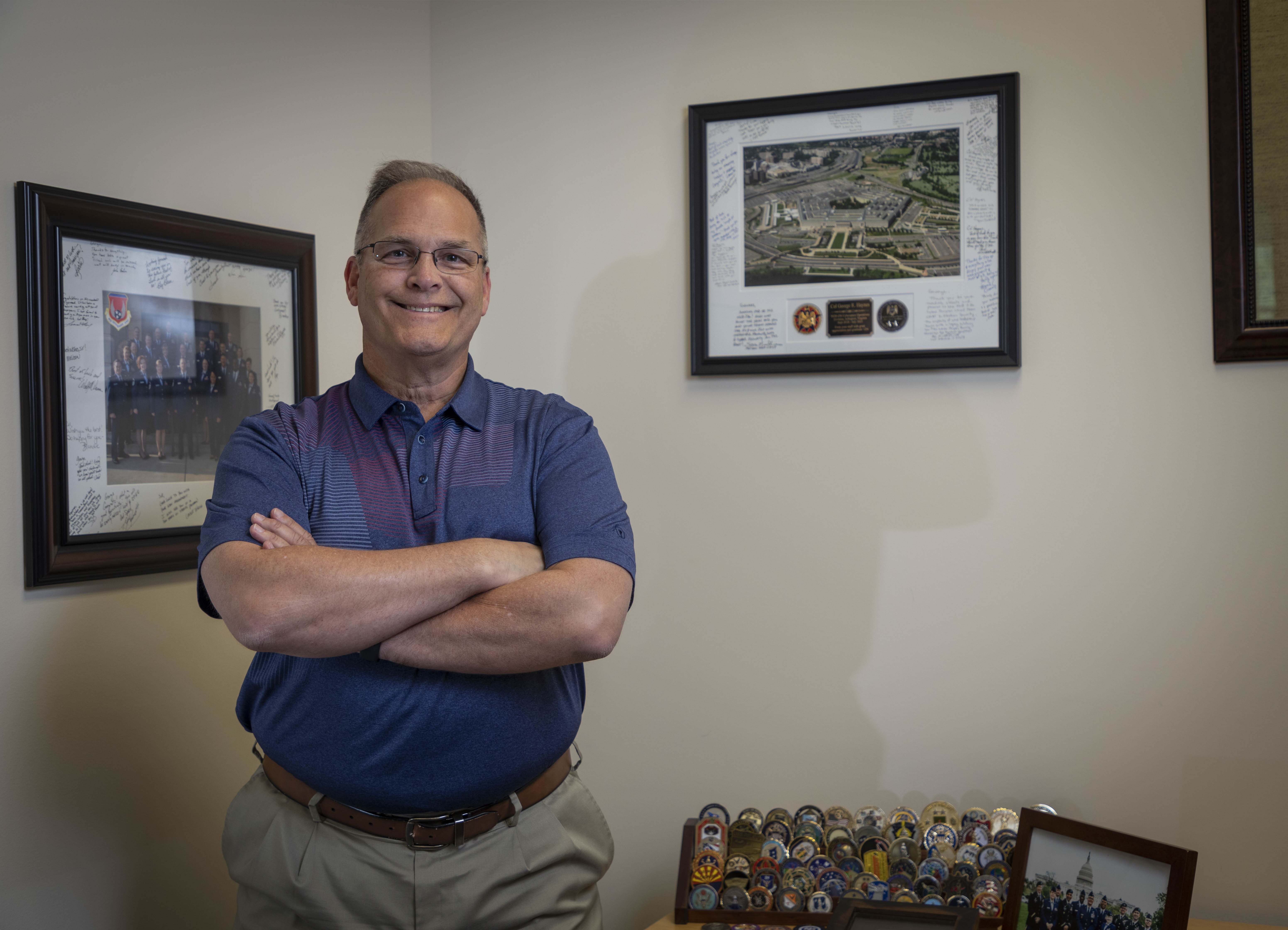
Meet George Haynes, deputy chief information security officer at Y-12, who plays a key role in the security and strategic defense of our network and systems.
All views and opinions are the employee’s and do not necessarily reflect those of CNS.
While cybersecurity is frequently regarded as the act of protecting a network of information and systems from theft or damage, a key element of its definition and study is acknowledging how people factor into its defense and practice.
Many information theft cases are a result of human error due to negligence or lack of cybersecurity awareness. It’s important to recognize the impact we all have in safekeeping our technology.
As a key expert, leader, and direct support to the site, Y-12’s George Haynes is integral to the strategic development and operations of CNS's Cybersecurity programs.
By ensuring that our interconnected network of information, systems, and people are protected in the digital landscape, Haynes focuses on CNS's daily cybersecurity defense posture in analyzing risk balanced security measures and forming strategies against cyber threats.
What daily task lets you know you are helping achieve the CNS mission?
My daily tasks of understanding threats, improving cybersecurity architecture, accomplishing cybersecurity workforce plans, increasing effectiveness of enterprise risk management, and stimulating collaboration across organizations are key to achieving optimal protection and defense.
Are you doing what you envisioned as a young adult? If so, describe how you got here.
My professional background is in global military operations in the air, space, and cyber domains at the tactical, operational, and strategic levels. From working across military services, government agencies, and international partnerships, the goal is the same as Pantex and Y-12: effective mission accomplishment. As a young adult, I wanted to be an architect, but I took a turn toward technology; once I started that path, I soon found my passion.
What CNS principle drives you to be successful?
For me, it’s set high standards. Well executed standards apply to how we accomplish work, account for responsibilities, and achieve as a team by delivering value to the staff and organization to reach mission outcomes.
What work advice would you offer someone who is starting work at Y-12?
First, fully understand your role, your responsibilities, and the outcome expected from your efforts. Next, communicate often with your manager and team on status, barriers, and ability to deliver. Finally, never leave a meeting or team discussion with questions on what is expected and what responsibilities you are assigned.
What one thing would your coworkers be surprised to know about you?
I used to do gymnastics in college as a hobby.
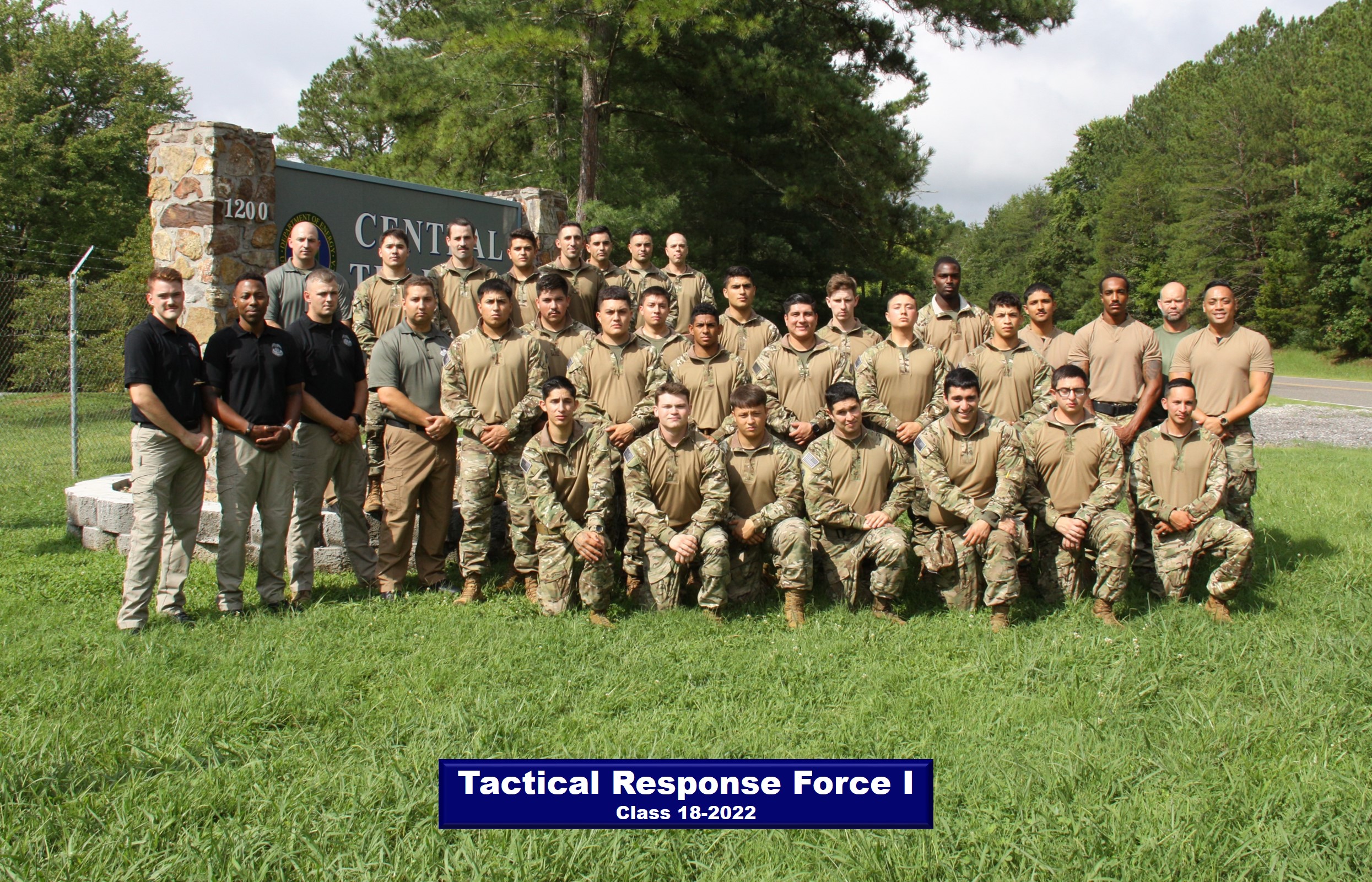
A recent 34-member Tactical Response Force 100 class included 25 trainees from Los Alamos National Laboratory in New Mexico.
A recent Tactical Response Force (TRF) 100 class included a few locals and a contingent far away from home.
The Central Training Facility (CTF) graduated 25 Los Alamos National Laboratory personnel from the TRF-100 course, which is the Department of Energy National Training Center’s standard basic training course for the security police officer upon entry into the U.S. Department of Energy (DOE) protective force community. Y-12’s CTF is certified to teach the National Training Center’s TRF-100 curriculum to anyone in the DOE system.
“This the first time we’ve done a large class from outside the Oak Ridge valley,” said CTF Manager Jim Hoffman. “It’s not uncommon to get a call from other sites asking if they can send folks to one of our classes, but it’s usually like one, two, or three students.”
The reason for the influx of Los Alamos students is because of the growth at the New Mexico site, and the National Nuclear Security Administration asked if the CTF could help. “They [Los Alamos] are going through expansion and needed additional classes to meet their needs,” Hoffman said.
The possibility of training a cadre of Los Alamos security police officers seemed unlikely until a shift occurred in the CTF's summer schedule. “When that happened, we’re able to do it,” Hoffman said. “We could help them out.”
The 34-member class also included three attendees from Sandia National Laboratories’ campus in Livermore, California, three from the Oak Ridge Federal Building Protective Force, two from Oak Ridge National Laboratory, and one new CTF range instructor.
The seven-week course focused on handgun and rifle training, defensive tactics (hand-to-hand combat), and basic DOE tactics, such as bomb and building searches, despondent employees, direct threats, and more. In addition, students completed a prerequisite web-based course prior to TRF-100 training.
“It’s very difficult to conduct large classes for others,” said Capt. Lynn Bales, lead instructor. “You try to put a spin on the classes relating to individual sites. That is tough when you are training folks from outside your site. Los Alamos did provide an instructor, who we could lean on during the course.”
Adding to the degree of difficulty was the inexperience of the trainees. “The class dynamic was different for this one,” Bales said. “We had students with no previous law-enforcement or military backgrounds. They’re just starting their careers. We typically don’t see that. The instructors earned their pay with this class.”
The students put in a lot of effort, too. For the course, students had to achieve passing academic and shooting grades. The average academic score was 387.92 out of a possible 400. In firearms, the passing score is 320 out of a possible 400 and this class had a 367 average.
“The students worked very hard and had a 100-percent pass rate,” Hoffman said. “The CTF instructors are really good at what they do and they worked additional hours with the trainees to ensure a high passing rate.”
What are you willing to deal with to get the job done?
For members of the Y-12 International HEU Remove Program technical team, removing highly enriched uranium from sites in Japan during the pandemic required a lot of planning, adapting, and — especially — patience.
Japan had one of the most stringent travel restriction policies in the world during the pandemic, and the challenges were significant according to Y-12ers who lived the experience.
Hurdles included needing approval from several government agencies to enter the country, caps on the number of travelers arriving each day, visas for each trip, and no use of public transportation during the quarantine period, requiring hired cars to shuttle teams to different locations. It was a lot to deal with, but the United States and Japan had made a joint commitment at the 2016 Nuclear Security Summit to remove all of the highly enriched uranium from the Kyoto University Critical Assembly, so the schedule was set.
“The transports were already scheduled, so we had to stick to the plan,” said Trent, the team lead.
“Y-12 is the National Nuclear Security Administration’s point on fresh HEU removals,” said Trent. “We are the Uranium Center of Excellence. We have the transport packages and the folks who know how to load and operate them and how to disposition it.”
No one, however, could have predicted the COVID-19 pandemic and its impact on the work.
“We were required to take a COVID-19 test 72 hours prior to travel, test upon arrival in Japan at an airport, then test to be released from quarantine,” said Brian, who worked on five of the shipments. “Then midway through the pandemic, the U.S. started requiring testing 24 hours before boarding a flight back home.”
Testing was tough, but the days spent literally trapped in quarantine were the toughest. Over the two years it took to remove the HEU from Japan, Brian said Y-12ers spent about 2 months in quarantine.
“We were required to stay in a motel room for 14 days, with minimal outside time,” said Brian. “We could not come and go as we pleased, but even if we could, there was no place to go. Most services, like restaurants, were closed due to COVID restrictions.”
So how did Brian and the others pass the time? He said he would walk the hallways of his hotel to break up the boredom. He also watched baseball. “I watched a lot of Japanese baseball during my quarantine periods. Thank goodness baseball doesn’t require a translator,” Brian said.
Among the team’s more memorable moments during quarantine was watching coverage of the 2020 U.S. Presidential election. “It was fascinating to see how other countries viewed the U.S. and our electoral process,” said Brian.
In all, the International HEU Remove Program and its Y-12 technical experts removed around 45 kilograms of HEU from Kyoto University. Brian said they had an “awesome” support team back at Y-12, including Y-12 Medical, which provided pre-travel testing and post-travel testing along with ensuring the team had supplies of masks and sanitizer.
“Despite the fact that much of the world’s supply chain had ground to a halt, Y-12 consistently was able to deliver all the equipment, supplies, and containers we needed, ahead of schedule. If it hadn’t been for the folks at Y-12, the removal of HEU could not have happened. There are a lot of unsung heroes at Y-12,” said Brian.
Now that they know what it is like to work this kind of project in a pandemic, would they do it again?
“Definitely would do it again,” said Trent. “We were accomplishing something worthwhile.”
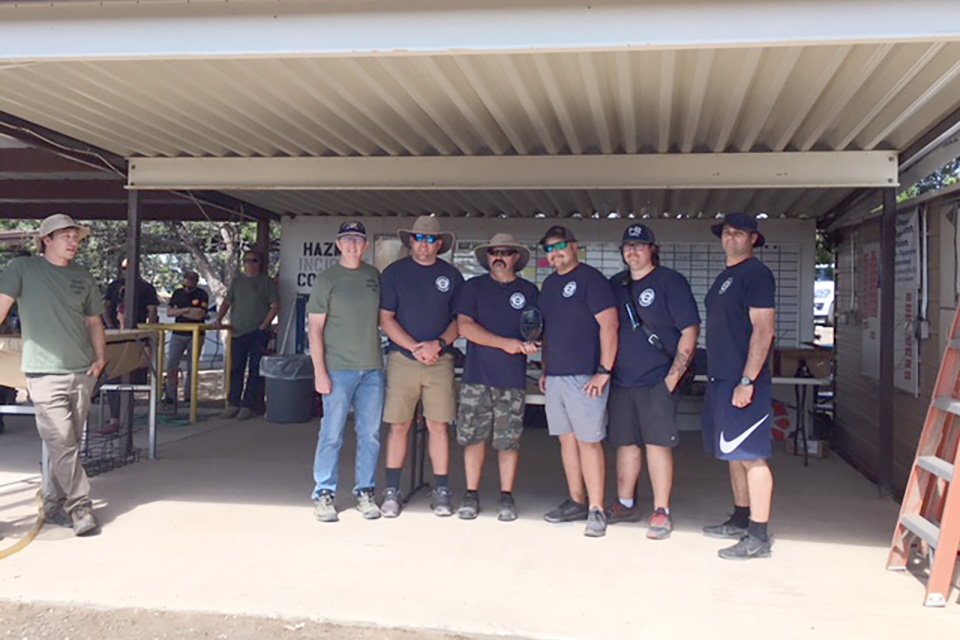
From left, Hazardous Materials Challenge Program Administrator Chris Ritter with Y-12 Fire Department members Craig Shaver, Jeff Foster, Brad Goss, Jeremy Maiden, and Doug Allen, who finished second in the annual competition.
Y-12 Firefighter Jeff Foster maneuvered through hazard after hazard in blazing southwestern heat and thought it was cool.
“It was one of the best experiences of my life,” he said. “We worked hard and really represented the Y 12 Fire Department.”
Foster, along with captains Craig Shaver and Jeremy Maiden and firefighters Doug Allen and Brad Goss, put knowledge and emergency skills to the test at the 26th Annual HAZMAT (hazardous materials) Challenge. Hosted by the Emergency Management Division of Los Alamos National Laboratory in New Mexico, the competition brought together eight teams from across the nation to network with one another, learn new HAZMAT techniques, and practice skills during six scored scenarios, which depicted realistic hazardous material situations. Teams dealt with a biological hazard, nerve agent decontamination, chemical release, a stinger operation involving the transfer of a chemical substance from an overturned tanker to a recovery truck, a confined space rescue, and an active-shooter situation. Each scenario had to be completed in 90 minutes during the four-day event.
“It didn’t feel like 90 minutes,” said Shaver. “It went by really fast. There’s a lot going on, a lot to take in, and a lot of decisions to be made.”
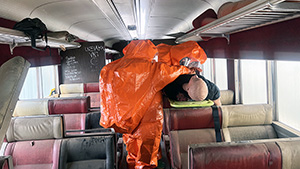
For one exercise, the Y-12 team members Doug Allen and Jeff Foster had to evacuate a train car with victims exposed to a biological agent.
Allen added, “You’re constantly trying to figure out what angle to take and how they want things performed. It’s a process.”
When the scores were tallied, the Y-12 team finished second, and a composite team that included a Y-12 member nabbed third place. This is only the second time Y-12 has participated. The team attended in 2019, prior to COVID-19 restrictions, which halted the competition for two years.
“For our second time attending, that’s a significant accomplishment, considering the teams we were competing against,” said Division Chief Ben Taylor, who also attended. “Most of the teams have been competing there for several years.”
The competitors included Los Alamos National Laboratory (LANL), Department of Defense, Civil Support Team, the Air Force, and others.
Just like three years ago, the teams felt the heat of competition.
“It was hot,” Taylor said. “On average, the temperature was in the mid to upper 90s. Couple that with wearing fully encapsulating PPE (personal protective equipment), and you are testing your ability to make decisions while enduring physical stress.”
And compounding the physical challenge, “There was the elevation change,” Taylor said. “Here, we are at about 800 feet above sea level, but at Los Alamos you’re at 7,300 feet. It’s quite an adjustment to be out there.”

Y-12 Fire Department’s Jeff Foster stops at a mock decontamination station after completion of an exercise.
The heat and elevation added another dimension to the already intense exercises.
“These were real life scenarios,” Maiden said, “things that have happened across the world.” A standout for him was the biological hazard exercise, which was staged in a train car and involved removing passengers who had been exposed to a biological agent.
An unplanned scenario called upon the Y-12 team to extend a helping hand when another team forgot to bring some important equipment.
“In one event, the CST needed structural firefighting gloves for their exercise,” Taylor said. “They forgot them when they were in a scramble to get their equipment. Y-12 stepped up and offered the use of our equipment. So, we were good neighbors.”
Not only did the Y-12 team display sportsmanship, but also strong camaraderie.
“This was a great experience for all of us to get together, no matter what shift we’re on,” Goss said. “This shows how we can work together. And we are proud to have won second.”
Taylor echoed Goss’s sentiments about teamwork.
“Everybody pulled their weight equally,” he said. “They did an exceptional job.”
Also earning praise were the Y-12 Fire Department members who held down the station while the HAZMAT Challenge team was away.
“I want to thank all of the battalion chiefs who allowed their firefighters to attend training prior to the event and those who worked to cover positions while the team was atLANL,” Taylor said. “The team could not have been successful without everybody’s support.”
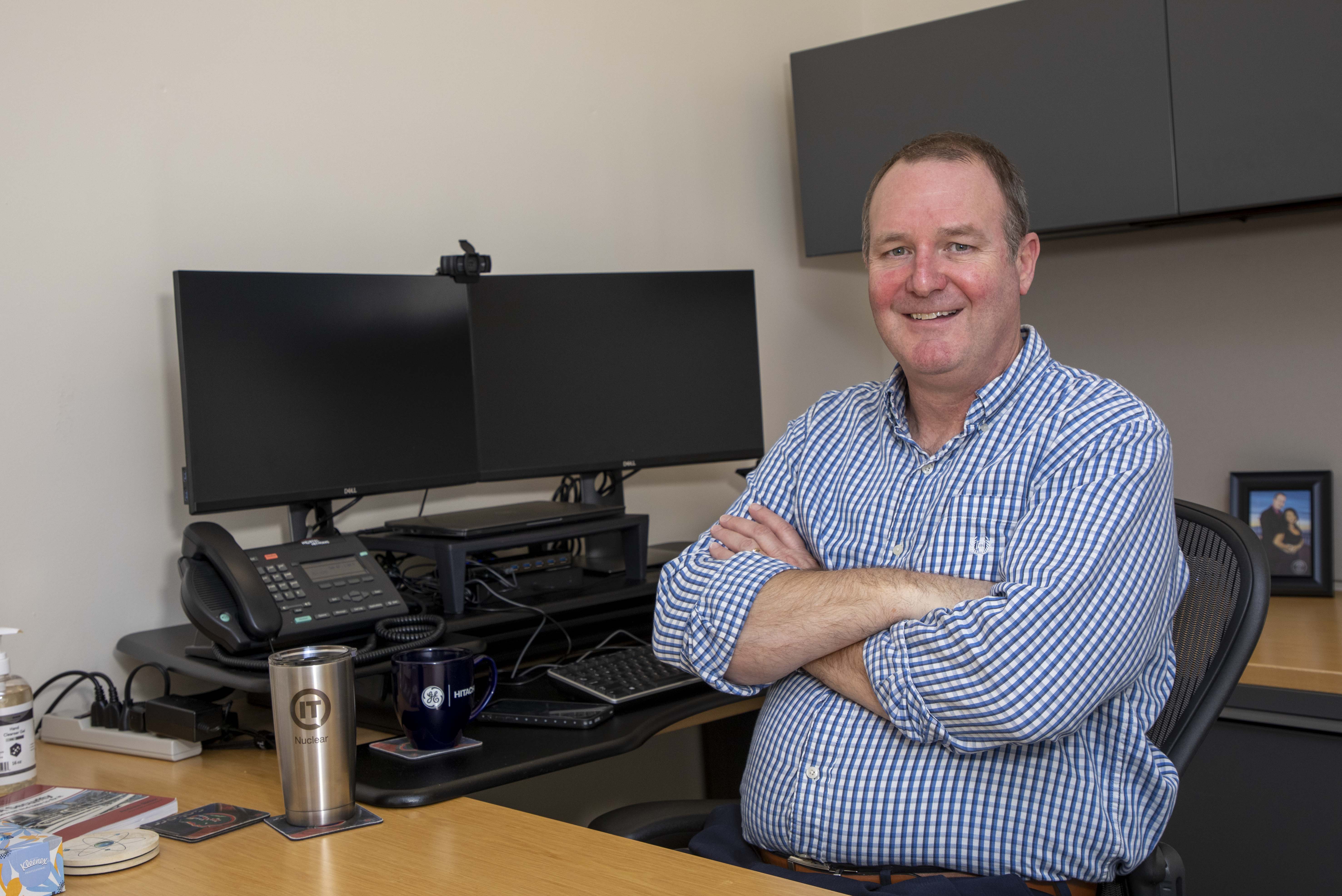
Take 5 minutes and learn about Max Robertson, director of Information Technology Business Operations at Pantex and Y-12. All views and opinions are the employee’s and do not necessarily reflect those of CNS.
With digital systems and technology integral to how we operate, Information Solutions and Services enables a wide range of business-related and mission-essential services, processes, and products at Pantex and Y-12. To name a few, IS&S supports more than 13,000 devices, 4,000 VPN connections, and 2,000 servers that reside on our network. In honor of this year’s seventh annual IT Professionals’ Day, we recognize and thank the leaders and experts in the field of Information Technology and Cybersecurity that not only keep us connected and protected, but are part of building the future landscape of technology for our mission.
As the demand for new technology increases to support growth and modernization at the sites, Max Robertson, director of IT Business Operations, plays a major role in its development. From facilitating current projects that require IS&S support to approving procurements of new hardware and software, Robertson’s team is tasked with ensuring every form of technology on a project (e.g., computers, software, components) follows the required quality, security, and implementation steps before it meets the network.
“We are looking to the future in IS&S, but we also support the current projects across the business that are underway and require a digital footprint,” Robertson said. “While funding and scope are key, the people of IS&S are truly the essential element behind the success and completion of a project.”
What daily task lets you know you’re helping achieve the CNS mission? How/why does that task let you know you’re working toward the mission?
There are a few daily tasks that factor into how I know we’re helping achieve the mission. First and foremost, it’s knowing that we’re keeping our systems and network operational. Secondly, it’s knowing how our projects are making positive progress, and lastly, it’s knowing if the demands are being scoped clearly. This helps my team and me see that we are supporting the foundation of the business today (i.e., systems, purchases, and contracts) and preparing to support technology in the future.
Are you doing what you envisioned as a young adult? If so, describe how you got here.
I am doing so much more than I envisioned for myself. I had a limited vision at the beginning of my career. My background is in nuclear engineering, so my focus was working in a nuclear power plant for 30 to 40 years and then retiring. I never dreamed I would be able to accomplish all that I have in the past 35 years, including starting up first-of-kind nuclear facilities, protecting nuclear power plants from cyber threats, and modernizing nuclear fuel fabrication facilities.
What CNS principle drives you to be successful?
Own the Outcome (good or bad) and Set High Standards. With these two principles, we are held accountable for our work and we make our environment better than we found it.
What work advice would you offer someone who is new to Pantex or Y‑12?
Our sites have a rich history, so change isn’t easy. However, change is needed to ensure we are relevant and focused on areas required for improvement. Be patient and diligent in your efforts. Ensure that you are working daily on the items that are important to the mission, DOE, and NNSA since we represent them. Remember that what we do here is vital to global security, and you play a key role in protecting our country, our values, and our nation’s allies.
What one thing would your coworkers be surprised to know about you?
Those who don’t know me well might be surprised to know that I am a strong Christian. I also have a passion for digital technology and nuclear technology. While both are core to my interests, I feel the most satisfied when I am solving problems or fixing issues (must be my engineering background).

